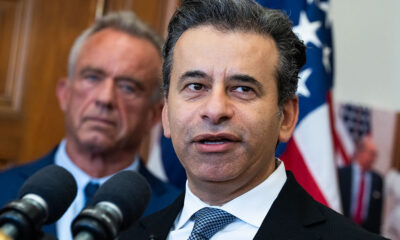Science
New Study Warns of Potential Meteor Risks from Taurids in 2032, 2036

Each autumn, Earth traverses the debris trail left by Comet Encke, resulting in the captivating phenomenon known as the Taurid meteor shower. As the planet encounters fragments from this comet, it often witnesses vibrant fireballs illuminating the night sky. However, a recent study published in Acta Astronautica raises concerns about the potential hazards posed by larger fragments during future meteor showers, particularly in 2032 and 2036.
During its journey around the Sun, Comet Encke sheds rocky and dusty debris, which Earth intersects twice a year. The annual Taurid meteor shower peaks from late October to early November, appearing to radiate from the Taurus constellation. Typically, this shower features a mix of small and larger fragments, leading to spectacular displays. However, every three to seven years, Earth encounters denser clumps of debris, increasing the visibility of these fireballs.
Researchers aimed to assess the risks associated with larger meteors from the Taurid stream. Utilizing observational data and planetary defense modeling, the team found that the risk of air-burst sized Near-Earth Objects (NEOs) is greater than initially believed. These NEOs, while small enough to explode in the atmosphere, can still cause significant damage.
The study highlights the possibility of a Taurid resonant swarm—a theoretical cluster of debris influenced by the gravitational pull of Jupiter. The Taurid stream orbits the Sun seven times for every two orbits of Jupiter, which can lead to the accumulation of debris due to the planet’s massive size.
Mark Boslough, a researcher at the University of New Mexico and lead author of the study, stated, “The resonant swarm is theoretical, but there is some evidence that a sparse swarm of small objects exists because bright fireballs and seismic signatures of impacts on the moon have been observed at times that the theory has predicted.” This suggests that if a resonant swarm does indeed exist, it could closely approach Earth in 2032 and 2036, increasing the risk of impacts.
Looking ahead, Boslough emphasized the need for preparedness: “We have enough time to observe these dense clusters and come up with ways to mitigate the damage from a potential strike.” He pointed out that existing telescopes could be used for targeted sky surveys during the critical years, which would enable scientists to identify these objects with ample warning.
Despite the heightened risk, Boslough reassured that the average probability of a significant impact remains extremely low. He noted, “Even an enhanced risk means that the probability would still be low. The swarm will come from the direction of the Sun in 2036, so fireballs will not be seen in our blue skies unless they are extremely bright.”
As the scientific community continues to monitor the Taurid meteor shower and its associated risks, this study serves as a reminder of the importance of planetary defense strategies and ongoing observation efforts to ensure the safety of our planet.
-

 Science2 weeks ago
Science2 weeks agoResearchers Challenge 200-Year-Old Physics Principle with Atomic Engines
-

 World1 week ago
World1 week agoBoeing’s Aircraft Production: Assessing Numbers and Challenges
-

 Politics2 weeks ago
Politics2 weeks agoNHP Foundation Secures Land for 158 Affordable Apartments in Denver
-

 Lifestyle6 days ago
Lifestyle6 days agoTrump’s Push to Censor National Parks Faces Growing Backlash
-

 Science1 week ago
Science1 week agoAI Misidentifies Doritos Bag as Gun, Triggers Police Response
-

 Lifestyle1 week ago
Lifestyle1 week agoRed Bluff High School’s Elli Nolan Named Rotary Student of the Month
-

 Entertainment7 days ago
Entertainment7 days agoSyracuse Stage Delivers Lively Adaptation of ‘The 39 Steps’
-

 Health2 weeks ago
Health2 weeks agoNeuroscientist Advocates for Flag Football Until Age 14
-

 Lifestyle2 weeks ago
Lifestyle2 weeks agoLongtime Friends Face Heartbreak After Loss and Isolation
-

 Politics6 days ago
Politics6 days agoNFL Confirms Star-Studded Halftime Show for Super Bowl LVIII
-

 World2 weeks ago
World2 weeks agoGlobal Military Spending: Air Forces Ranked by Budget and Capability
-

 Health2 weeks ago
Health2 weeks agoFDA Launches Fast-Track Review for Nine Innovative Therapies









